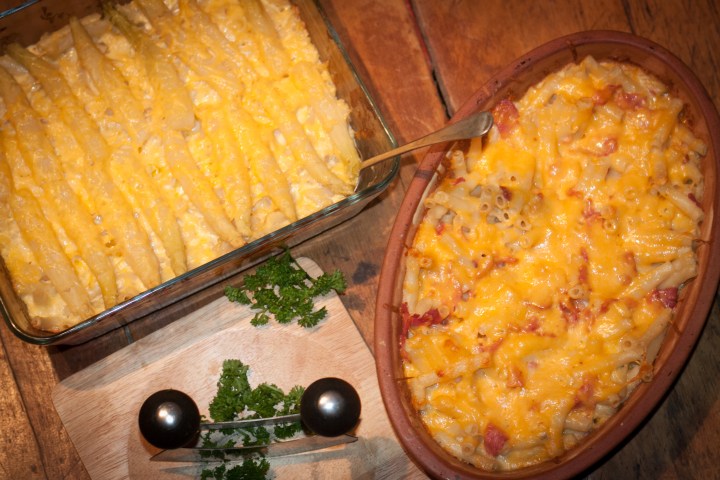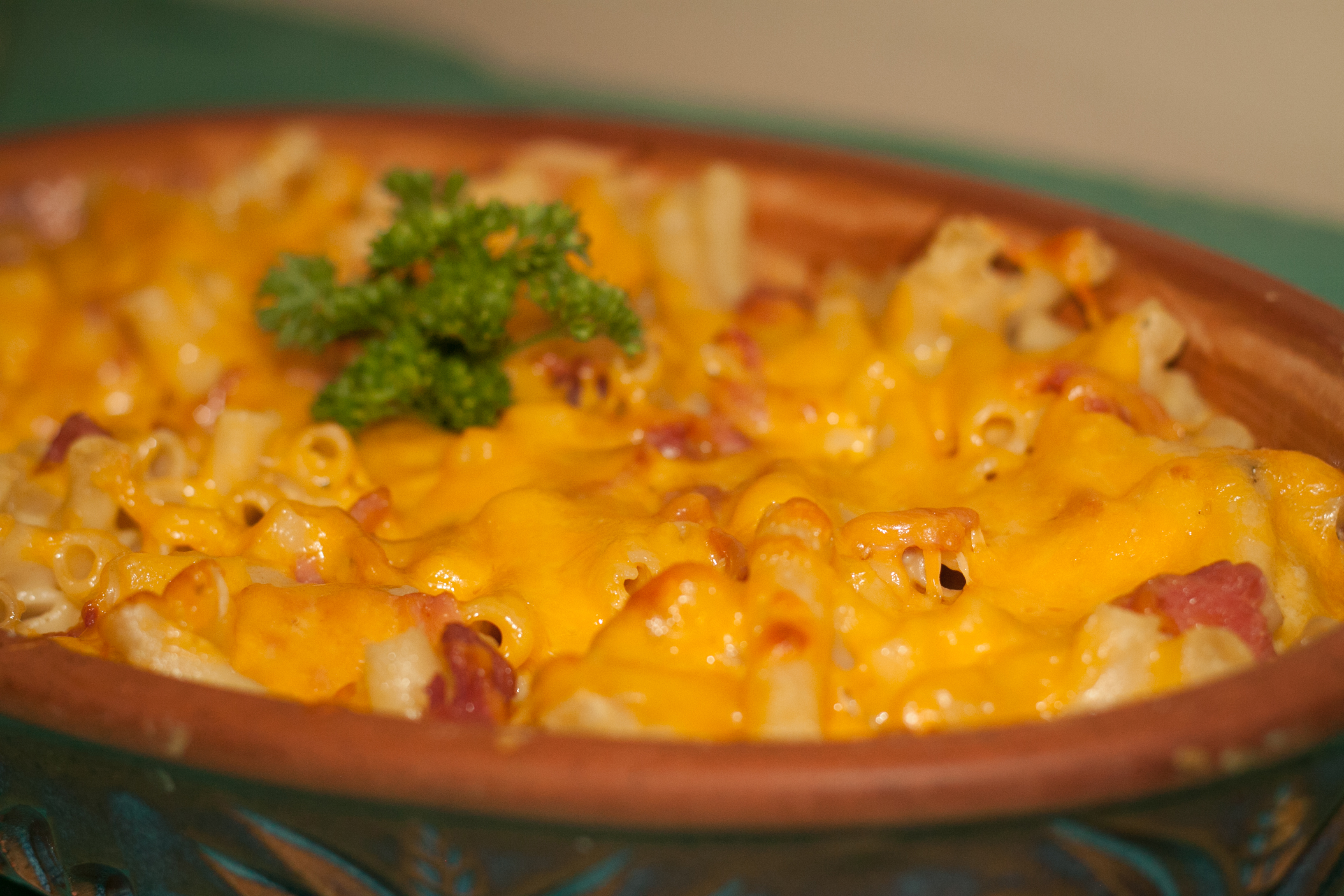GASTROTURF
The Big Mac & Cheese Edition

Who invented macaroni cheese? Thomas Jefferson – if you ask an American. (Who else?) ‘Don’t be daft, mate, it’s British’ – if you ask a Brit. ‘No it ain’t, mate, it’s bloody Australian.’ (If you have the timidity to ask an Australian. I wouldn’t, if it’s after 11pm at the Clobber & Roo.) And you thought it was South African? Course it is!
Americans do actually credit Thomas Jefferson, the third president of the United States, for inventing Mac & Cheese. CliffordAWright.com tells us that while, obviously, its origins really are Italian, “the American macaroni and cheese has two main lines of ancestry claimed”.
In the first, Wright writes: “It is thought that macaroni and cheese was a casserole that had its beginnings at a New England church supper. In south-eastern Connecticut it was known long ago as macaroni pudding. In the second, and more famous story, and more than likely the original story, it is said that the classic American macaroni and cheese returned with Thomas Jefferson to Virginia after his sojourn in Italy. Jefferson had brought back a pasta machine from Italy. His daughter Mary Randolph became the hostess of his house after Jefferson’s wife died and she is credited with inventing the dish using macaroni and Parmesan cheese. Later, the Parmesan was replaced with cheddar cheese. Anyway, that’s one story. It is more likely that Jefferson encountered the dish in Italy and brought back the recipe.”
(In fact, most sources attribute France as the place Jefferson found it.)
Epicurious produced an amusing video to illustrate this:
Wright had, however, first acknowledged that “one finds macaroni and cheese recipes from the late 13th Century in southern Italy. The anonymous Liber de coquina, written in Latin by someone familiar with the Neapolitan court then under the sphere of Charles II of Anjou (1248-1309), has a recipe called de lasanis which we can call the first ‘macaroni and cheese’ recipe. It was a macaroni, in this case, lasagne sheets made from fermented dough and cut into two-inch squares that were cooked in water and tossed with grated cheese, probably Parmesan. The author suggests using powdered spices and layering the sheets of lasagne, just like today, with the cheese if desired”.
A bit of a mash-up of macaroni and lasagne there. Anyway, having absorbed all of that, and lest we forget ourselves, one should never underestimate the hold the British have on us all, always have, and most probably always will. So, no surprises then for Wikipedia’s take on all this:
“Macaroni and cheese – also called mac and cheese or mac n cheese in American and Canadian English, macaroni cheese in the United Kingdom — is a dish of English origin, consisting of cooked macaroni pasta and a cheese sauce, most commonly Cheddar. It can also incorporate other ingredients, such as breadcrumbs, meat and vegetables.
“Traditional macaroni and cheese is a casserole baked in the oven; however, it may be prepared in a saucepan on top of the stove or using a packaged mix. [That may be the English part?] The cheese is often first incorporated into a Béchamel sauce to create a Mornay sauce, which is then added to the pasta. In the United States, it is considered a comfort food.”
However, under “American history”, Wikipedia acknowledges that “the American president Thomas Jefferson and James Hemings, his chef and slave, encountered macaroni in Paris and brought the recipe back to Monticello.
“Jefferson drew a sketch of the pasta and wrote detailed notes on the extrusion process. In 1793, he commissioned American ambassador to Paris William Short to purchase a machine for making it. Evidently, the machine was not suitable, as Jefferson later imported both macaroni and Parmesan cheese for his use at Monticello.
“In 1802, Jefferson served ‘a pie called macaroni’ at a state dinner. The menu of the dinner was reported by Reverend Manasseh Cutler, who apparently was not fond of the cheesy macaroni casserole. Nevertheless, since that time, baked macaroni and cheese has remained popular in the United States.” (Sorry, Australia.)
“A recipe called ‘macaroni and cheese’ appeared in the 1824 cookbook The Virginia Housewife written by Mary Randolph, Wikipedia continues. “Randolph’s recipe had three ingredients: macaroni, cheese, and butter, layered together and baked in a hot oven. The cookbook was the most influential cookbook of the 19th century, according to culinary historian Karen Hess.
“Similar recipes for macaroni and cheese occur in the 1852 Handbook of Useful Arts, and the 1861 Godey’s Lady’s Book. By the mid-1880s, cookbooks as far west as Kansas and Festus, Missouri, included recipes for macaroni and cheese casseroles. Factory production of the main ingredients made the dish affordable, and recipes made it accessible, but not notably popular. As it became accessible to a broader section of society, macaroni and cheese lost its upper-class appeal.”
Interesting how Wikipedia provides no justification at all for its claim that, of course, macaroni cheese is British. Aren’t all the best things?
Meanwhile, in Canada (which, like Australia, is really just British with different accents), macaroni and cheese recipes “have been attested to since at least Modern Practical Cookery in 1845, which suggests a puff pastry lining (suggesting upper-class refinement); a sauce of cream, egg yolks, mace, and mustard; and grated Parmesan or Cheshire cheese on top”. This after “Macaroni and Cheese was brought to Canada by British immigrants, coming from other parts of the British Empire”.
Wikipedia even remarks that one Sasha Chapman, writing in Canadian magazine The Walrus, considered it to be “Canada’s national dish, ahead of poutine” (French fries and cheese curds with a brown gravy. Where’s the face palm emoji when you need it.)
Meanwhile in the deep south (of Africa), we’ve all been brought up to eat macaroni cheese as if it were own own, so there’s no reason we can’t claim it, with a reluctant nod to Italy. In our household, it comes out frequently, if never quite the same. I often include a tin of chopped tomatoes in the cheese sauce, which I always start by making a béchamel. But I use bacon frequently as well.
It’s one of those dishes which get me into trouble in the kitchen for using too many pots. But there’s no way around it. You need a big pasta pot for the macaroni. You need a saucepan for the milk, and another to make the béchamel in. And a deep enough pan to hold it when it goes into the oven.
The two basic preparations are the béchamel and the pasta. It may surprise you how many people mess up pasta by not following a few very basic rules:
- Use plenty of water in a deep pot;
- Bring it to a rapid boil;
- Only then add the macaroni, all at once;
- Immediately give it a thorough stir with a wooden spoon to stop the noodles from sticking together;
- Cook rapidly in boiling water just al dente, never over;
- Drain in a colander, giving it a shake or three;
- Combine it with your sauce.
For the béchamel, bring the milk (use as much as you like, I prefer plenty) just to a boil and turn off the heat. Melt 4 Tbs butter in a saucepan, remove from heat and stir in a heaped tablespoon of flour, quickly and thoroughly, to make a roux. Stir continuously while adding the boiled milk a little at a time, only adding more when combined smoothly and thickening again. Continue until the milk is all used up. Cook at a simmer, stirring, for about 15 minutes, for the floury taste to go away. Grate in plenty of Cheddar (or cheese of your choice) to make a basic Mornay sauce.
At this point I sometimes add a tin of chopped tomatoes, and return to a simmer. I often add bits of fried bacon. I have been known to stir in fried onions, and/or garlic. I have heard of people adding broccoli which, much as I love broccoli … where is that face palm emoji?
A favourite recipe is for macaroni cheese with blue cheese and bacon. Once you’ve made your basic cheese and cooked and drained your macaroni, stir some chopped up blue cheese into the sauce, and also add some fried bacon bits, then continue cooking it as usual.

Bacon and blue cheese lend a bit of pizzazz to macaroni cheese. Photo: Louis Pieterse
This week I tried something different, and it’s perhaps surprisingly good: tinned asparagus. I wouldn’t waste fresh asparagus on this, and the tinned variety has a flavour of its own which complements cheese wonderfully.

Asparagus spears make something special of a generous macaroni cheese bake. Photo: Louis Pieterse
You’ll need two standard cans of white asparagus spears, a good quantity of cheese sauce as described above, and a decent load of cooked macaroni. Drain both tins of asparagus. Chop the spears from the first tin into three or four. Stir them into the cheese sauce. Combine the sauce and macaroni in your greased oven dish. Layer the spears from the other can neatly on top. Sprinkle over more grated cheese, but not too much as you want to see the layer of asparagus. Bake until the cheese has crisped a little.
You read that here first, so it must be South African, right? There we go. DM





 Become an Insider
Become an Insider